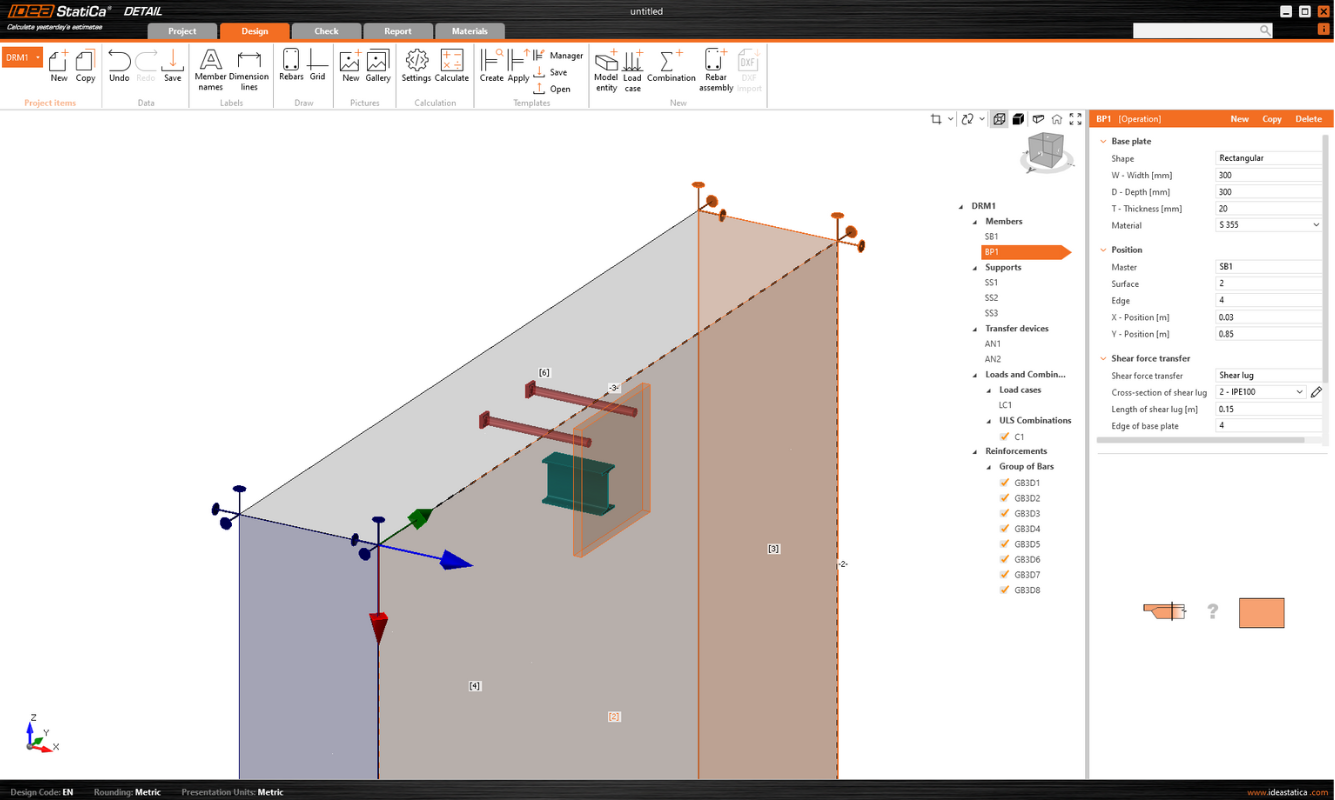IDEA StatiCa is a tool for solving complex 3D tasks and is fully verified for anchoring in concrete blocks. This solution allows you to perform designs without oversimplifications and provides checks based on the Ultimate Limit State (ULS). Thus, we have a tool to capture all types of concrete failures for footing. Together with IDEA Connection for anchorage verification, we offer a comprehensive package for everyone dealing with steel-to-concrete connections.
Enhanced shear transfer, improved results, and simplified integration between IDEA StatiCa Connection and IDEA StatiCa Detail, along with the verifications, means the solution is now fully capable of handling real, practical examples of any kind of anchoring.
What are some key improvements compared to the BETA version?
- Shear transferring devices: Fundamental entities that enable the general design of all types of anchoring (Anchors, Shear lugs, and Friction). There are all types corresponding to the options in IDEA StatiCa Connection, allowing smooth import. Read the separate release note dedicated to Shear transferring devices.
- Result Sections: As part of the improvements for a better understanding of the results, Detail provides the opportunity to see the actual behavior of the structure. Read the separate release note: Results interpretation improvement
- Full Connection export with new entities: The import is possible, including all information about materials, types of anchors, and their end treatments. Read the separate release note: Import of anchoring from Connection to Detail
- Working Grid Plane: There is a new grid to help surface identification during modeling, reinforcement, creating sections, etc. Read the separate release note: Modelling improvement - Grids and Self-weight
- Self-weight: The application includes another load type, self-weight. It is automatically calculated based on the dimensions and the selected material.
- Refined mesh around anchors: The mesh around the anchors has been locally refined for accurate results. This setting cannot be changed. The mesh is generated automatically.
Comprehensive functionality description of 3D Detail.
Note: Currently for Eurocode (EN) only.
Known limitations for Detail 3D
Since Detail is just a tool that cannot replace engineering judgment, a safe understanding of its functions, benefits, and limitations is necessary. Read the limitations that must be taken into account:
- The solution is suitable only for reinforced concrete.
- The application provides ULS checks according to EN.
- Only one concrete block is supported in Detail.
- In Detail, the anchors are only checked for tensile strength. It is necessary to use Connection for shear and interaction checks.
- Only models anchored via the base plate and only Direct contact can be imported to Detail (from Connection).
- Imported loads and user-input loads cannot be combined within one model.
For a full list of limitations with further explanation, see the article: Known Limitations for 3D Detail
Verifications
We emphasize once again that although Detail 3D is a general solution for modeling any detail, we verify examples step by step. The current focus is mainly on verifying functionalities related to anchoring. See the overview of what are possible use cases and plans for further development below:
| Use-case | Functionality ready | Verification provided | Verification in version |
| Footings of steel columns | YES | YES | 24.1.0 |
| General anchorings of steel members (beams, bracings, lifting lugs...) | YES | YES | 24.1.0 |
| General use of the Detail 3D for other cases (Pile caps, Pier caps, etc.) | YES | NO | in development |
| Wall model type | NO | NO | in development |
We continuously update and add new verifications for 3D Detail, where we verify the functionality and the assumptions. For a deeper understanding of the method, read the comprehensive Theoretical Background, which includes the main assumptions, a description of the material model, and more.
Released in IDEA StatiCa version 24.1


